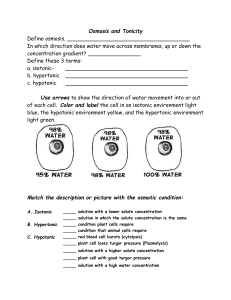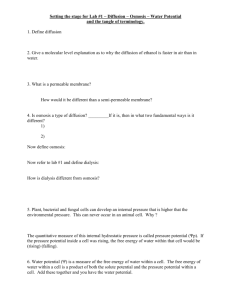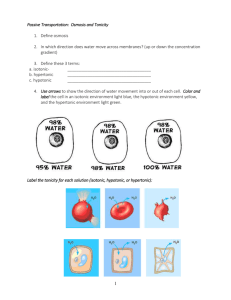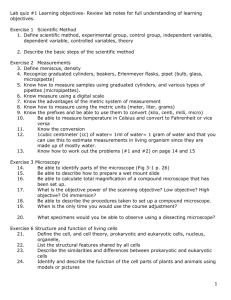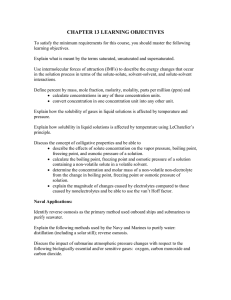Document
advertisement
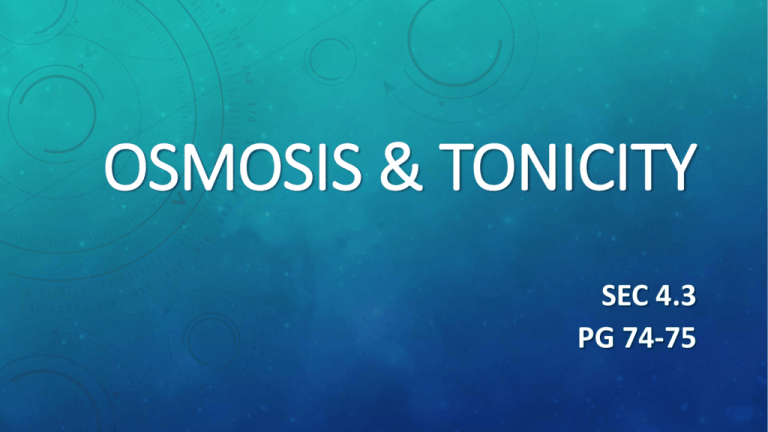
OSMOSIS & TONICITY SEC 4.3 PG 74-75 OSMOSIS: - a special case of diffusion involving water - water molecules move across a selectively permeable membrane from an area of high water concentration to an area of low water concentration - does not require ATP energy. - Special channe; proteins allow water to pass through the cell membrane. OSMOSIS • Movement of water across a membranes results in: • OSMOTIC PRESSURE:buildup of pressure due to osmosis. • osmotic pressure acts against HYDROSTATIC PRESSURE to cause changes in osmotic apparatus (thistle tube, u-tube) and in cells. • HYDROSTATIC PRESSURE: the pressure of gravity on the solution TONICITY • Tonicity refers to the strength of solution in relationship to osmosis. • 3 terms to know: 1. Isotonic 2. Hypotonic 3. Hypertonic The type of solution will determine the movement of water! ISOTONIC SOLUTIONS • iso = “the same” • tonic = “solution” • concentration of solute outside cell is the same as the solute concentration in the cell • water moves into cell at equal rate to water moving out • cell stays the same, is at EQUILIBRIUM HYPOTONIC SOLUTIONS • hypo = “lower” • solute concentration OUTSIDE cell = LOWER • More water outside cell water moves INTO cell • cell swells • LYSIS –bursting may occur in animal cells • TURGOR PRESSURE builds up in plant cells Vacuole pushes outwards against cell wall HYPERTONIC SOLUTIONS • hyper= “ higher” • solute concentration outside cell is higher • water concentration is lower outside cell • net movement of water OUT OF cell • CRENATION occurs in animal cells • PLASMOLYSIS occurs in plant cells A) D) B) C) E) F)


